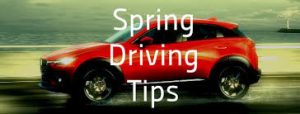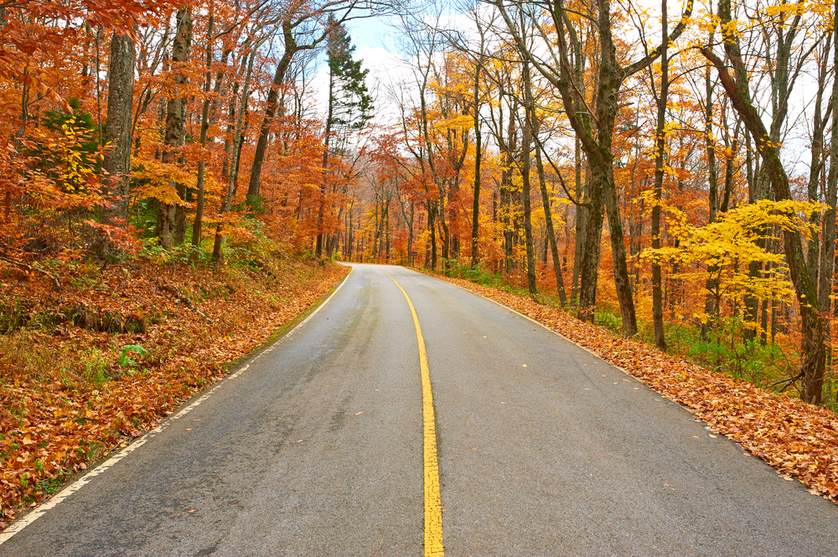Spring Driving Tips!

- Always wear a seat belt. Why wouldn’t you? Seat belts are the #1 lifesaving piece of equipment built into vehicles today. They save lives! Make sure that those riding in the car including young children are properly installed and secured by their belts. I will never start driving until everyone is buckled up and I will not ride in cars with those who do not use seatbelts.
- Always travel within the speed limit; if the road conditions are hazardous, then go slower. I watch people speed by me during torrential rainfalls and say a quick prayer that they will arrive alive. Speed is involved in approximately 30% of all traffic crashes resulting in fatal and serious injuries. I read somewhere that at the most speeding may only save about 5 minutes on a trip. Do we need to risk our lives and that of others for a lousy 5 minutes? How about getting in the habit of leaving the house 5 minutes earlier? The U.S. saw a 20% jump in motor vehicle death rates in the first six months of 2020, despite the quarantine according to the National Safety Council. They credit higher speeds for most of these fatalities.
- Set up your infotainment systems before leaving on a trip. Technology is great and manufacturers are adding more to our vehicles every time we turn around. Be sure to set up your GPS, radio stations, or other techy gadgets before you begin driving. That goes for your mobile device too. Turn on your “Do Not Disturb While Driving” setting to avoid using your phone when driving.
- Make sure your car is in tip-top shape for traveling. There is nothing worse or more dangerous than a breakdown on the road or a flat tire. I know people who were killed by a drunk driver while waiting for Triple A. Included in this tip is another. If there is a breakdown, get away from the car. It is much safer.
- Never and I mean NEVER drive when you are impaired by alcohol or other drugs. Most people know when they have had too much to drink; if they don’t, they always have a “sober” designated driver or a taxi cab ready. Much easier and cheaper than paying fines, lawyers, and increased insurance rates if you are caught. It is also safer than risking your life and someone else’s because you decided to drive when you knew you shouldn’t.
- Do you take prescription meds or smoke pot? Have you heard of a synergistic effect? It’s when two or more drugs taken together create a more potent and dangerous effect. If you are taking prescription meds, be sure to read and understand the possible side effects that taking them individually or together can create. If you are thinking of rolling a fat one, just stay home! Marijuana is impairing, no matter what pot enthusiasts say. People do not smoke to feel the same as they did before they lit up or why bother?
- Stay a safe distance behind the car in front of you no matter how many people cut in. The general rule is now a 3-second gap. During inclement weather, allow more time to safely stop for the conditions in which you’re driving. The most important thing is that YOU DO NOT TAILGATE. You risk multiple car pileups among other dangerous scenarios, so stay as far back as you can. Of course, if you are using your mobile device, it doesn’t matter how far you are behind that car, you are courting disaster.
- Pull into a safe place if you are tired. Late night? Not enough sleep? Drowsy driving is just as dangerous as drunk, drugged, and distracted driving. The car is not your bedroom and you will be a much better driver if you keep them separate.
- Driving while Angry. Did someone pull in front of you or do something else equally annoying? If they made you mad and all you can think of is revenge, the best thing to do is pull over, take a deep breath, and count to ten or twenty if you need to. Let it go. Think of something pleasant like that glass of wine when you get home. Or the hug you will receive from a loved one. Driving isn’t therapy and you shouldn’t take out your anger on your driving or the other driver.
- Respect your passengers! They are your responsibility when you are the driver and they should be treated with respect. Always drive safe, sober, focused, and alert. They will feel the benefits. If they are children they will learn from your example.
If you just focus on your driving, keep your hands on the wheel, keep your eyes on the road, and practice all these tips you will be considered a “Good Driver”.


Recent Comments